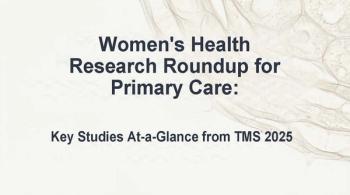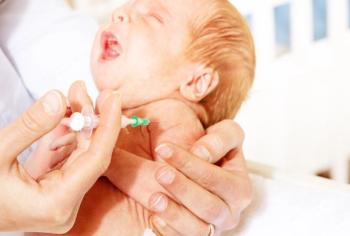
Obesity in Adulthood Associated with Increased Risk of Frailty Later in Life
Results from longitudinal prospective cohort study underscore the importance of monitoring patients’ weight throughout adulthood to reduce the risk of frailty.
General and abdominal obesity, particularly over time during adulthood, was associated with an increased risk of prefrailty/frailty in later years in a new prospective cohort study published in BMJ Open.
Findings underscore the importance of
Frailty is a multifactorial geriatric syndrome characterized by physiological deterioration, increased vulnerability, and decreased resilience towards external stressors, according to study authors. While underweight is among the factors associated with increased frailty, a growing body of evidence suggests a positive association between
“Obesity aggravates the age-related decline in muscle strength, aerobic capacity and physical functionality, thus worsening health and well-being,” explained investigators. “It is also closely associated with metabolic disorders, inflammageing and oxidative stress, all of which have been suggested to contribute to the risk of frailty.”
Uchai and colleagues examined the association between obesity—assessed using body mass index (BMI) and waist circumference (WC)—and prefrailty/frailty among 4509 persons aged ≥45 years over 21 years of follow-up (1994-2016) in the Norwegian city of Tromsø. Prefrailty and frailty were combined as one outcome.
For the purposes of the study, physical frailty was defined as the presence of ≥3 and prefrailty as the presence of 1-2 of the following 5 frailty components:
- Low grip strength
- Slow walking speed
- Exhaustion
- Unintentional weight loss
- Low physical activity
A BMI of <18.5 kg/m2 was categorized as “underweight,” a BMI of 18.5–24.9 kg/m2 as “normal,” a BMI of 25.0–29.9 kg/m2 as “overweight,” and a BMI of ≥30.0 kg/m2 as “obese.” WC was categorized as “normal” (men ≤94 cm, women ≤80 cm), “moderately high” (men 95–102 cm, women 81–88 cm), and “high” (men >102 cm, women >88 cm), according to the study.
Results
Among the total study cohort, the mean age was 51.6 years at baseline and 28.4% were prefrail and 1.1% were
Participants with obesity, (adjusted odds ratio [OR] 2.41, 95% CI 1.93-3.02) or overweight (OR 1.19, 95% CI 1.02-1.39) at baseline (assessed by BMI) were significantly more likely to become prefrail/frail at follow-up compared with those with normal BMI. No statistically significant association was observed between participants with underweight and the odds of prefrailty/frailty; however, the number of adults with underweight was “insufficient to reach any conclusion.”
Participants with moderately high WC (OR 1.57, 95% CI 1.21-2.03) or high WC (OR 2.14, 95% CI 1.59 to 2.87) at baseline had higher odds of becoming prefrail/frail at follow-up compared with individuals with a normal WC, noted investigators.
When assessed jointly, at baseline, participants with both overweight and moderately high/high WC (OR 1.48, 95% CI 1.11-1.98) or those with both obesity and moderately high/high WC (OR 3.11, 95% CI 2.07-4.70) had higher odds of being prefrail/frail compared with persons with normal BMI and normal WC. Investigators did not detect a significant association with prefrailty/frailty among participants with normal BMI and moderately high/high WC or overweight with normal WC at baseline.
In a model with BMI trajectories, researchers saw higher odds of prefrailty/frailty among participants in the overweight to obesity trajectory (OR 1.67, 95% CI 1.19-2.35) or those in the constantly increasing obesity trajectory (OR 3.12, 95% CI 1.80-5.41), compared with adults in the stable normal BMI trajectory. Compared with participants in the stable normal WC trajectory, those with high WC were more likely to be prefrail/frail at follow-up.
“In the context where the population is rapidly ageing and the obesity epidemic is rising, growing evidence recognizes the subgroup of ‘fat and frail’ older individuals in contrast to viewing frailty only as a wasting disorder,” wrote Uchai et al. “Participants with both high BMI and high WC, that is, general and abdominal obesity, especially for a long duration throughout their adulthood, were observed to have an increased likelihood of pre-frailty/frailty. It highlights the importance of routinely assessing and maintaining optimal BMI and WC throughout adulthood to lower the risk of frailty in older age,” they concluded.
Reference: Uchai S, Frost Andersen L, Arnesdatter Hopstock L, Hjartåker A.
Newsletter
Enhance your clinical practice with the Patient Care newsletter, offering the latest evidence-based guidelines, diagnostic insights, and treatment strategies for primary care physicians.
























































































































































































































































































